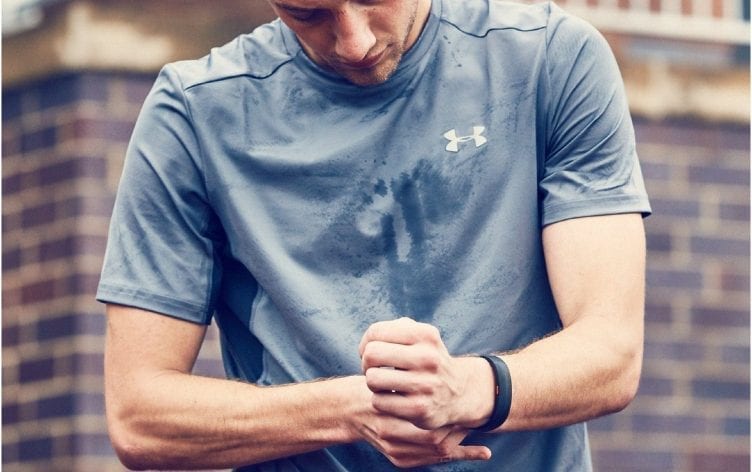8 Ways to Eat and Exercise For Quick Weight Loss

Long-term results are the hallmark of a healthy lifestyle, however, sometimes we need a quick fix for weddings, reunions, other special events or to boost motivation. Here are tips to get fast weight-loss results while ramping up your workouts.
Ramping up workouts is a great way to boost performance and achieve body goals; however, it's common to increase your fitness routine only to gain weight. This is a complaint I hear quite frequently as a performance dietitian. Putting in the time and hard effort to train for a race, keep up with a group class, get in shape for a special occasion or accomplish health goals only to see the number on the scale creep up instead of down can be demoralizing. It might be common, but that doesn't mean it is any less frustrating to deal with.
One good thing about common complaints is there is typically a common solution. It might take some work to identify exactly what your individual issue is, but from my experience working with fitness-minded clients, following these suggestions can help ensure you get the lean results you're after.
Body composition numbers, that is. Weight is only part of the picture when it comes to fitness. Getting a body fat assessment and taking measurements of various body parts can provide more accurate tracking of whether your workout is working for you. Muscle is more dense than fat and is a more metabolically active (healthier) tissue — and muscle is put on when fitness routines (particularly strength routines) are increased. Of course, you can't know this just by stepping on the scale.
Sudden weight gain can mean your routine is, in fact, working if your body fat has decreased and lean mass increased.
Spending more time sweating it out can lead to more desire to put calories back in. Unless your workouts are longer than an hour and very intense, chances are you do not need the extra fuel. If losing weight is your goal, a calorie deficit needs to be created — and that won't happen if you're reaching for snacks with the 'I earned this' mentality.
Unless you've started an ultra-endurance routine, your body has enough glycogen stores to burn. Carbohydrates store extra water weight which leads to a puffy appearance. Cutting back on carbs can help you achieve the short-term result of looking leaner due to water weight loss. Giving yourself a bit more protein throughout the day can help keep you feeling full and increase muscle gains.
Yes, I said it. Consuming lots of raw vegetables is great for your health, but it can cause bloating that gives the appearance of not having a flat stomach. Having to digest a lot of roughage can also make you feel sluggish and uncomfortable, making it hard to get in the workout intensity you're after. Foods with sugar alcohols (diet, processed foods), chewing gum and sparkling water can also lead to excessive bloat.
Ramping up fitness can require you put calories into your workout to keep your body energized to perform well. Too often I see clients refusing to eat during their workouts only to be starving and completely overdo it later in the day. Restructure your daily diet by adding a banana before a workout for an energy boost and reduce a snack somewhere else in your day.
Now, for a few non-food related tips on how to structure and monitor your workouts:
On days when you're mixing workout disciplines, go for the weights first. This can help your body warm up to handle cardio better, allowing you to go harder. It also ramps up EPOC (excess post exercise oxygen consumption) so you go into the cardio workout with a higher rate of energy burn.
Machines at the gym and online calculators tend to overestimate your burn. Checking in with your body's workload is the only way to get an accurate look at how much energy you use for a given activity. Research fitness trackers that, at a minimum, count steps, heart rate and sleep.
Often, we ramp up workouts only to be more sedentary overall. Kick the 'I'm going to sit on the couch for hours because I worked out this morning' mindset by using your tracker to set better step goals or buzz if you sit still too long. A good tracker can measure your heart rate during workouts to give a personalized look at how hard you're working and how many calories you're burning. If your heart rate is always at a 'walk to the mailbox' pace, you won't see the gains you're after.
When you work out, especially high-intensity workouts, your metabolism is boosted through post exercise oxygen consumption and the hunger hormone ghrelin is reduced. Doing a morning session and an evening session can make this burn last all day long.
While these tips can help ramp up your burn and short-term results, long-term health and lifestyle changes are always the big-picture goal. Once you've ramped up your routine, start to implement more sustainable ways to keep reaching your desired results.
About the Author

Lori Russell, MS RD CSSD Lori, MS RD CSSD is an accomplished sports dietitian; she holds a Master's Degree in Human Nutrition and Certification as a Specialist in Sports Nutrition. As a current professional road cyclist and previous elite marathoner and ultra-runner,Lori knows firsthand that food can enhance or diminish performance gains. She understands the importance of balancing a quality whole food based diet with science-backed performance nutrition and strives to share this message with others. Learn more about her @HungryForResults.
Related
Best Diet Plan to Lose Weight While Exercising
Source: https://blog.myfitnesspal.com/8-ways-to-eat-and-exercise-for-quick-weight-loss/


Komentar
Posting Komentar